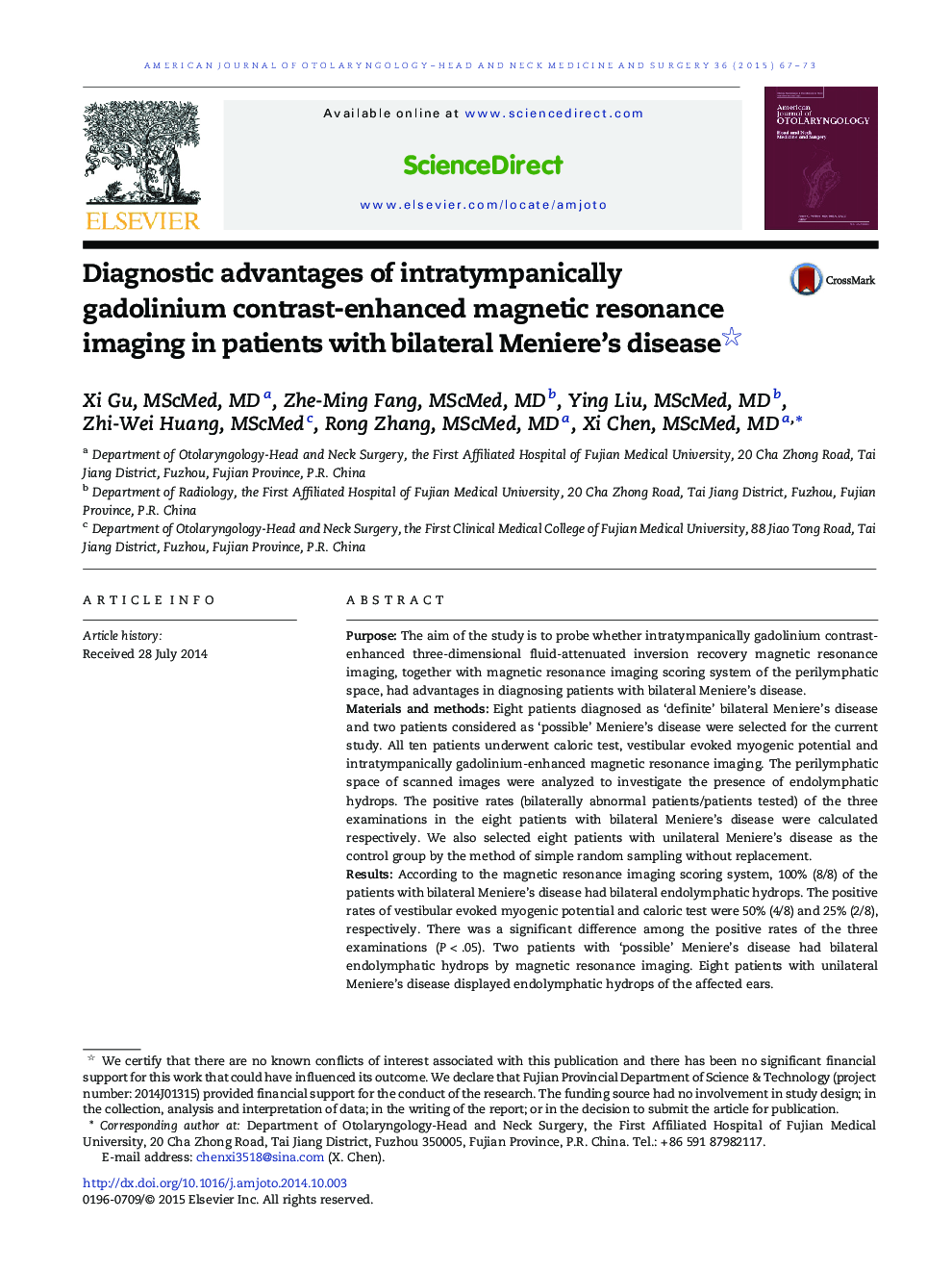| Article ID | Journal | Published Year | Pages | File Type |
|---|---|---|---|---|
| 4103008 | American Journal of Otolaryngology | 2015 | 7 Pages |
PurposeThe aim of the study is to probe whether intratympanically gadolinium contrast-enhanced three-dimensional fluid-attenuated inversion recovery magnetic resonance imaging, together with magnetic resonance imaging scoring system of the perilymphatic space, had advantages in diagnosing patients with bilateral Meniere's disease.Materials and methodsEight patients diagnosed as ‘definite’ bilateral Meniere's disease and two patients considered as ‘possible’ Meniere's disease were selected for the current study. All ten patients underwent caloric test, vestibular evoked myogenic potential and intratympanically gadolinium-enhanced magnetic resonance imaging. The perilymphatic space of scanned images were analyzed to investigate the presence of endolymphatic hydrops. The positive rates (bilaterally abnormal patients/patients tested) of the three examinations in the eight patients with bilateral Meniere's disease were calculated respectively. We also selected eight patients with unilateral Meniere's disease as the control group by the method of simple random sampling without replacement.ResultsAccording to the magnetic resonance imaging scoring system, 100% (8/8) of the patients with bilateral Meniere's disease had bilateral endolymphatic hydrops. The positive rates of vestibular evoked myogenic potential and caloric test were 50% (4/8) and 25% (2/8), respectively. There was a significant difference among the positive rates of the three examinations (P < .05). Two patients with ‘possible’ Meniere's disease had bilateral endolymphatic hydrops by magnetic resonance imaging. Eight patients with unilateral Meniere's disease displayed endolymphatic hydrops of the affected ears.ConclusionsIntratympanically gadolinium-enhanced magnetic resonance imaging has a relatively high positive rate of exhibiting bilateral endolymphatic hydrops. This technique with the magnetic resonance imaging scoring system is valuable when diagnosing bilateral Meniere's disease.
